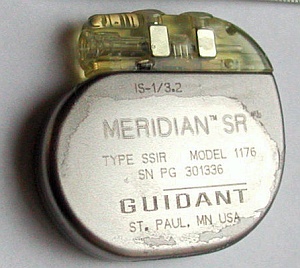
This inadequate stimulation is potentially dangerous for the patient undergoing the MRI scan, according to research published in BioMed Central’s open access journal BioMedical Engineering Online.
MRI is an imaging technique that uses a magnetic field instead of ionising radiation to produce a detailed image of internal body structures. MRI systems expose patients to very strong magnetic fields that can interfere with implanted cardiac pacemakers. Physicians are instructed by pacemaker manufacturers and MRI system manufacturers not to expose patients with pacemakers to MRI scans. MRI can damage the pacemaker’s electronic system and cause burning of heart tissue at the tip of the pacemaker lead, due to an increase in temperature from the MRI. Both risks can result in incorrect or absent stimulation from the pacemaker.
However, some cardiologists have published special protocols that describe how to allow patients with cardiac pacemakers to receive MRI scans. Some have stated that for certain patients, the diagnostic benefit from MR imaging versus other pacemaker compatible imaging modalities outweighs the risks.
FDA researchers Howard Bassen and Gonzalo Mendoza evaluated the risk of pacemakers causing unintended cardiac stimulation following exposure to a simulated MRI magnetic field by measuring electrical voltage produced at the tip of the pacemaker lead, where it would touch the interior of the heart.
Bassen and Mendoza found that when exposed to the strong, ‘gradient,’ magnetic field, the pacemaker could deliver a drastically altered pulse and stimulate the heart inappropriately, which could have devastating consequences for the patient.
‘MRI systems emit several types of extremely intense magnetic fields and have caused injury to patients due to interactions with pacemakers,’ said Bassen. ‘Cardiologists who choose to scan patients with cardiac pacemakers must assess the risks versus the benefits of the scan.’
‘This paper identifies one more risk,’ said Bassen.
Each year in the United States, patients undergo some 40 million MRI procedures. There are also 10 million pacemaker users in the United States